by Ocean Robbins: Organic fruits and vegetables cost more than conventional ones — sometimes a lot more…
So is it always necessary to choose organic? Or are some conventional fruits and veggies just fine? In this article, we go in-depth into the Environmental Working Group’s report on the 12 dirtiest and 15 cleanest items of produce, so you can make smart decisions to protect yourself and your loved ones from harmful pesticides.
The agricultural industry is addicted to pesticides, and the entire world is paying the price. The US Environmental Protection Agency (EPA) reports that global pesticide use in 2012 amounted to approximately six billion pounds. The term “pesticide” implies that these chemicals target and kill “pests,” but a better name would be “biocides” — destroyers of life — because they do a lot more than poison pests. They poison insects and pollinators; contaminate soil, water, and air; and can cause harm to farmworkers, agricultural communities, and people who eat produce sprayed with pesticides.
How common is it for US produce to be contaminated? “Nearly 70% of the fresh produce sold in the US contains residues of potentially harmful chemical pesticides,” according to the Environmental Working Group (EWG). And while we could go into detail about all the types and dangers of pesticides, we’ve already written an in-depth article all about them, which you can read here.
In this article, we’re going to review the most and least pesticide-contaminated produce, so you can make an informed decision before making a purchase.
Fruits and Veggies Are Not the Enemy
One thing to remember: Thousands of studies, published in peer-reviewed journals, tell us clearly that eating more fruits and vegetables can be good for your health. The more of these foods you eat, the longer you’re likely to live, and the less likely you are to develop most of the major chronic illnesses of our times.
Of course, in these studies, most of the fruits and vegetables were grown commercially, and many were contaminated with pesticides. So as you read about pesticide contamination on fruits and vegetables, please use this guidance as intended: To help you to know which foods are most important to eat grown organically if possible. If you can’t afford or can’t access organic produce, don’t let that stop you from eating fruits and veggies. If you’re choosing between an organic donut and non-organic kale… go for the kale. Just please do wash it well. (More on how to wash pesticides off produce here.)
Who Tests for Pesticide Residue?
For this article, I’m relying on two non-governmental organizations for the data on which fruits and vegetables are the dirtiest and cleanest. The best known of these groups is EWG, which has published their Shopper’s Guide to Pesticides in Produce™ annually since 2004. Their guide identifies the least and most contaminated produce, the Dirty Dozen and Clean 15, based on thousands of tests conducted by both the USDA and the FDA. In conducting these tests, the produce is made “plate-ready” before being tested: washed, peeled, and ready to eat. So the residues found in these studies are likely to be the same as the residues you are exposed to when you eat fruits and veggies that have been conventionally grown.
In 2020, Consumer Reports (CR) released their own report based on USDA data. CR came up with their own ratings (which not surprisingly look a lot like the ones they bestow on clothes dryers and new cars), by running the USDA numbers through several filters. These include: the total number of pesticides; the level of pesticides on fruits and vegetables; the frequency of detection; and their toxicity. CR factors in the pesticide’s Food Quality Safety Factor (FQPA), which is published by the Environmental Protection Agency (EPA) to avoid underestimating potential harms. The CR findings overlap significantly with those of the EWG but unlike the EWG, CR makes distinctions between US-grown and imported foods, as well as conventional and organic.
Rating Disclaimer:
Below, I summarize the EWG’s Dirty Dozen and Clean 15. Bear in mind as you go through the list that they are looking exclusively at conventionally grown produce, not organic. And of course, your best choice will almost always be homegrown since you can control what methods you use to nourish and protect the crops. (For our article on how to get started growing a garden, click here.) But if you can’t grow your own, this shopper’s guide can help you make wise consumer choices. Use it when you shop for fresh produce, either at the grocery store or your local farmers market.
One more thing before we dive in: This guide looks at pesticide residues only at the consumer level. In some cases, the ratings might be very different if the researchers factored in the exposure of the farmworkers and the communities where the crops are grown. For example, conventional imported bananas are rated “very good” by CR (because the peel provides pesticide protection for the fruit). But public health research shows that farmworkers exposed to the pesticides used on conventional bananas develop up to 80% more genetic anomalies (i.e., potentially cancer-causing mutations) than those who work in organic or “ecological” farms that do not use pesticides.
I am not aware of any convenient database or app to help you prioritize food choices to protect farmworkers. If this is important to you (and it certainly is to me), my recommendation is to choose organic when you can. And, if possible, also get involved in changing standards and public perceptions so that we can protect the essential and vulnerable workers who work in the fields growing your food.
The Dirty Dozen: The Most Pesticide-Contaminated Produce
This list comes from the EWG’s Dirty Dozen list. These fruits and vegetables are the ones that are most important to get organic if you can.
1. Strawberries

If you want to avoid exposure to multiple noxious chemicals, including dangerous fumigants that build up in the plant tissue, the fruit, and the soil, the most important food on this list to only buy organic is the strawberry. Most of the fresh strawberries sold in the US come from California. And data from 2015 revealed that per acre, strawberries receive 60 times more pesticide by weight than corn, which itself is a pesticide-intensive crop.
But it wasn’t just the amount; the variety and toxicity of the chemicals were also problematic. While most crops showed residues of just over two pesticides per sample, strawberries averaged almost eight — with 30% at ten or more. And some of these pesticides, according to the EWG, “are linked to cancer, reproductive and developmental damage, hormone disruption, and neurological problems.”
If you like strawberries (and most of us do!), you have several options. You can grow them yourself (It’s not that hard, and you don’t need a lot of land. Even a container on a sunny porch should do the trick). But if you’re buying fresh or frozen strawberries, it’s best to choose organic.
2. Spinach

If strawberries win the dubious distinction of highest amount of pesticides, spinach holds the distinction of highest pesticide residues by weight. The biggest culprit in testing was permethrin, a neurotoxin insecticide banned in Europe and linked to ADHD and various neurological impairments in children. And speaking of bans, let’s talk about DDT for a minute. The pesticide that was banned in the US in 1972 after being indicted for multiple harms in Rachel Carson’s book Silent Spring was still shockingly found on 40% of spinach sampled by the USDA in 2016. DDT, like many other pesticides, has a nasty ability to persist in the environment — even after almost half a century.
Your best bet, aside from growing your own, is organic spinach, according to CR. Next best is imported frozen spinach, which is lower in pesticides than spinach grown in the US. In any case, always wash spinach well, as pesticide levels were higher in unwashed spinach than the washed spinach tested by the USDA.
3. Kale

Given kale’s well-justified popularity as a nutritional powerhouse, I’m sad to report that this wonderful leafy green is one of the most contaminated crops in the US. In 2017, the USDA found that almost 60% of non-organic kale samples were contaminated with the herbicide DCPA (marketed as Dacthal), which has been banned in Europe since 2009 because of cancer risks. DCPA’s main application is to kill crabgrass, which can outcompete kale in poor soil conditions. Rather than remedy the soil, farmers are told to keep pouring on the chemicals.
The problem here is that DCPA was identified as a possible human carcinogen by the EPA as early as 1995. The data was so alarming, the manufacturer actually petitioned the EPA in 2005 to terminate its use on a variety of crops, including kale. Unfortunately, the ag industry has ignored the science and continues to douse our kale in it. In the US, the only kale deemed generally free from DCPA are organic varieties.
4. Nectarines

Named after the divine drink of the Olympian gods, it’s a cruel irony pesticide residue often fouls up these delicious fruits. The USDA found 33 pesticide residues in nectarine samples, including five known or probable carcinogens, 17 suspected hormone disruptors, and six developmental or reproductive toxins. Oh, and if that’s not bad enough, they were also found to contain 10 chemicals toxic to honeybees, our most important and endangered pollinators.
The good news is, organic nectarines are low in pesticides, according to CR’s data.
5. Apples

At first blush, apples look pretty good. They’re treated with fewer pesticides than many other crops, averaging 4.4 pesticide residues per sample. And they aren’t heavily treated while growing. The problem occurs after harvest when conventional apples are bathed in a chemical named diphenylamine, which keeps the skins pretty while the apples are in cold storage. American regulators decided that diphenylamine didn’t pose any unacceptable risks — in contrast to European officials, who were swayed by evidence that by-products of diphenylamine may contribute to cancers of the stomach and esophagus. For this reason, American-grown conventional apples are banned in Europe.
Some apples have also been genetically modified for cosmetic rather than functional reasons. Arctic apples, for example, are spliced with genes that prevent the flesh from browning when cut open. (To avoid this dreaded condition, you can either eat them once cut, soak in diluted lemon juice, or just be OK with apples that turn brown when their cut skin is exposed to the air.) Since GMOs are viewed by some as a giant uncontrolled experiment in overriding the laws of nature, and there’s plenty of reason to be skeptical about industry claims of safety, there are reasons you may want to avoid these “Franken-apples.”
Your best bets when it comes to apples are homegrown (a well-tended apple tree can last up to five generations), or organic varieties.
6. Grapes

EWG tells us that non-organic grapes contain loads of pesticide residues, including eight cancer-causers, 17 suspected hormone disruptors, 10 neurotoxins, and four developmental or reproductive toxins. Plus 19 that are toxic to honeybees.
The only good thing you can say about non-organic grapes is that they’re better than non-organic raisins. According to EWG, almost 100% of samples of non-organic raisins contained residues from two or more pesticides.
In a discrepancy that I can’t quite resolve, CR rates domestic non-organic grapes as very good, and imported ones as good. I hope they’ll publish the data behind their findings, as well as details of their methodology, so the public will be able to make grape decisions with more confidence. To be safe, my recommendation is to buy organic grapes and raisins.
Sadly, wines — and vinegars, like red wine or balsamic — are also subject to potentially harmful doses of pesticides. Roundup is commonly used in non-organic vineyards, at more than a pound and a half per acre, as are various other fumigants, herbicides, and nematicides (killers of microscopic critters called nematodes, the problematic varieties of which flourish in poor soil). Residues found in wine rival those found in raw grapes, indicating that the winemaking process isn’t protective. These are good reasons to opt for wines made from organically grown grapes if you choose to drink wine at all. (More on the health effects of wine and other forms of alcohol here.)
7. Peaches

EWG and CR agree that fresh, non-organic peaches are among the dirtiest crops in the US. Samples examined by the USDA found the residues of 62 separate pesticides, including a whopping 24 suspected hormone disruptors and a dozen neurotoxins.
If possible, stick to organic peaches. CR also reported that non-organic canned peaches are low in pesticides and received an “excellent” rating. While we don’t typically recommend canned fruit, if you do choose to buy canned organic peaches, look for those packed in organic fruit juice instead of sugar-water or syrup.
8. Cherries

Almost half of the cherries sampled by the USDA contained residues of bifenthrin, a neurotoxin that kills insects by paralysis. It’s moderately harmful to mammals (including humans) and wreaks absolute havoc on fish and their marine ecosystems. It also appears to cause cancer in mice, but not rats, so we really don’t know what that says about carcinogenesis in humans. But add to this nasty chemical the residues of 42 others found on cherries by USDA testing, and you have a recipe for individual and environmental concern.
Aside from homegrown (there are many varieties of cherry trees and bushes that produce delicious fruit you’ll never find in a supermarket), your best bet here is frozen, domestic organic cherries. Even imported organic cherries were rated only “fair” by CR, based on suspicions of inadequate oversight of organic standards by countries such as Turkey and China. Fresh organic cherries could be a solid choice too — though they vary by grower.
9. Pears
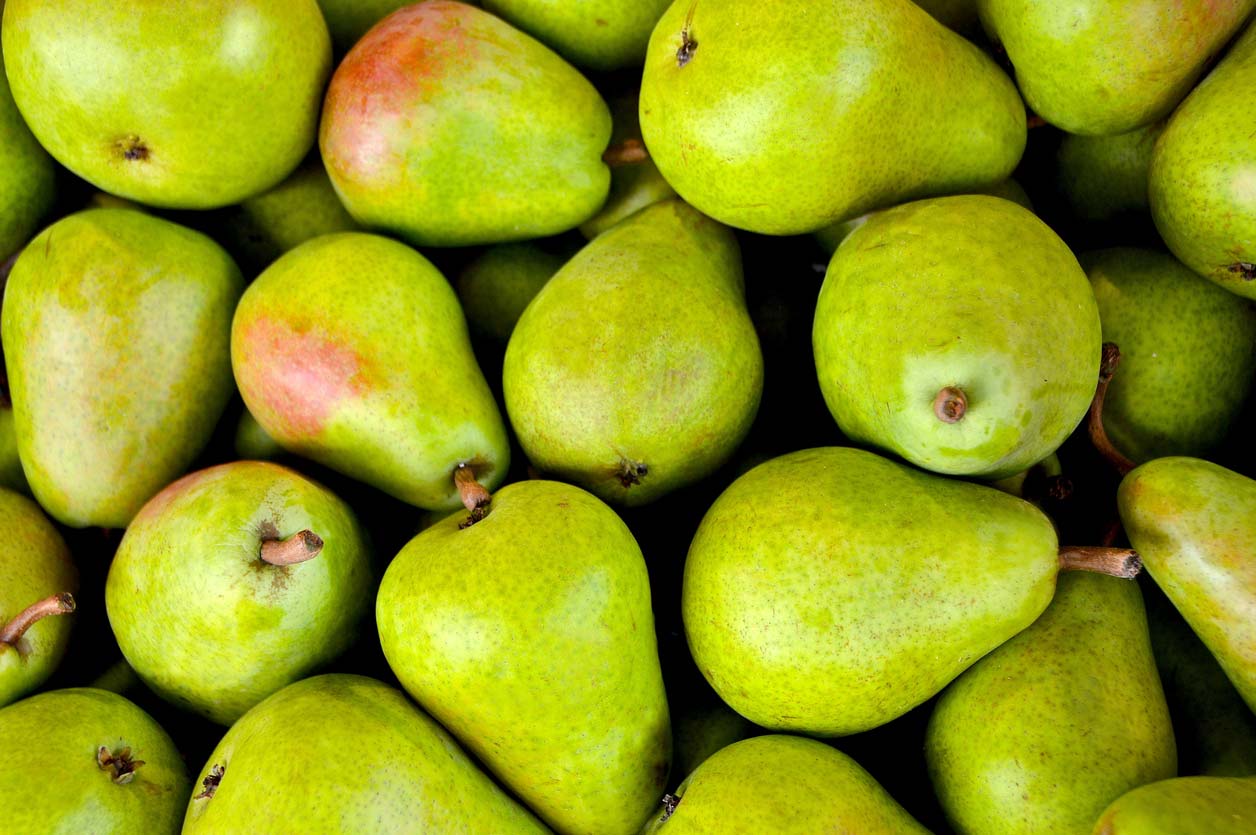
Four out of 10 samples of non-organic pears were found to have residues of pyrimethanil, a fungicide shown to cause underdevelopment of ovaries and interference in normal sexual differentiation in tree frogs. In other animal tests, pyrimethanil caused damage to livers, kidneys, and thyroid glands. The USDA classifies it as a Group C (potential) carcinogen.
A quarter of pear samples were also contaminated with o-Phenylphenol, a mold growth retardant whose jocular rhyming name belies its nasty effects: it’s a known carcinogen, suspected hormone disruptor, and developmental toxin.
When buying fresh pears, choose organic if possible. Both domestic and imported samples were rated “excellent” by CR.
10. Tomatoes

The good news about tomatoes is that, even though they contain many different kinds of pesticide residues (69 in cherry tomatoes, and 35 in regular ones), the chance of you finding a tomato with a specific pesticide is smaller than the crops mentioned so far. The most common pesticide found in cherry tomatoes, bifenthrin, was in under one-quarter of samples. And the most frequently found pesticide in regular tomatoes, endosulfan II (sounds like a bad video game sequel), was present in just 17% of tested samples.
Even so, choose organic when you can. Both fresh and canned organic tomatoes appear to be fine.
And good news for all aspiring home gardeners — tomatoes are one of the easiest crops to grow. A single cherry tomato plant grown in a container on a patio can provide you and your family with a season’s worth of salad additions. With hundreds of hybrids and heirloom varieties, you’re likely to find tomatoes that fit your gardening space and your taste buds.
11. Celery

Celery doesn’t come with the worst pesticides out there but contains quite a few of them. According to the USDA, 100% of samples had residues of chlorantraniliprole, which appears to have mild effects on humans but can be lethal to honeybees. And samples also contained spinosad, which kills mosquito larvae and harms bees.
Your best celery options include growing your own or purchasing domestic or imported organic celery.
12. Potatoes
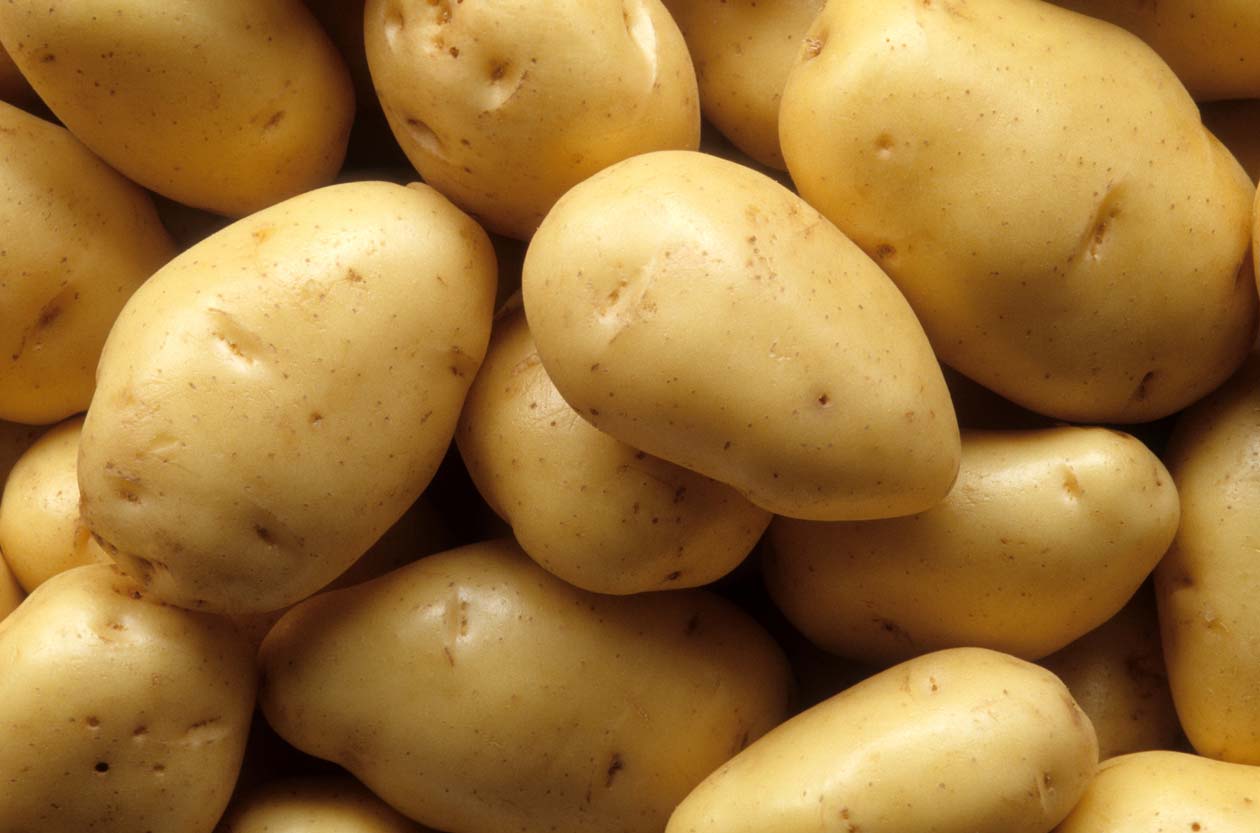
Potatoes grab the final Dirty Dozen spot largely due to high concentrations of the toxins chlorpropham and imidacloprid (do you also wonder how people get the job of naming dangerous new chemicals?). Chlorpropham, which helps the potatoes grab living space by killing broad-leaved weeds, can attack the central nervous system, leading to depression, seizures, and neuropathy — along with listlessness and compromised coordination. Farmworkers exposed to chlorpropham can develop these symptoms, and also experience skin and eye irritation.
In addition to watching out for conventional potatoes, you’ll also want to stay away from GMO potatoes. It’s a complicated story, but if you’re interested, here’s an exposé from a former Monsanto scientist who worked on genetically modifying potatoes. He admitted he had been wrong when he had thought he could “predict the absence of unintentional long-term effects on the basis of short-term experiments.”
If you want to grow your own potatoes, here’s an idea: potato towers are lots of fun. And because they grow vertically, can take up small amounts of square footage in a garden. If you’re buying, choose US-grown organic potatoes to steer clear of pesticides and GMOs all at the same time.
The Clean 15: The Least Pesticide Contaminated Produce
Now that you’ve made it through the scary part of this article, it’s time to reward yourself by discovering the 15 least pesticide-contaminated crops.
1. Avocados
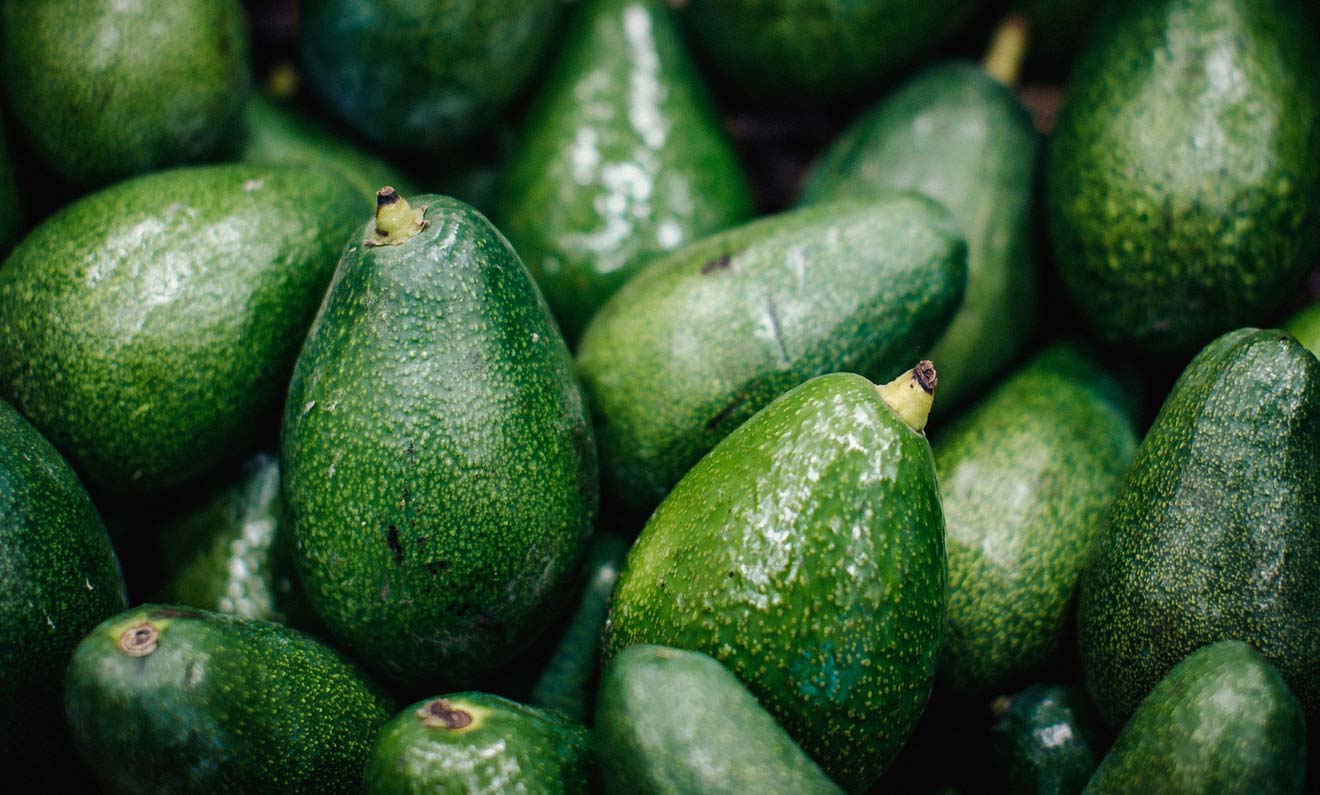
Whew! Avocados were one of the cleanest conventionally grown produce items tested. Fewer than two percent of samples showed any detectable pesticide residue. And the single pesticide found, imiprothrin, appears fairly benign in toxicity studies.
That said, while pesticides don’t make it into the thick-skinned avocado fruit, the pervasive spraying in the Mexican avocado industry is causing environmental damage and creating public health problems. Local residents who rely on lake water that receives runoff from the avocado fields exhibit high levels of liver and kidney problems. So if you can afford organic or US-grown avocados, that may be the most socially responsible option.
2. Sweet Corn

Another hyper-clean crop, sweet corn, also contained pesticide residue in fewer than one of 50 samples. And frozen corn received a perfect score — no residues found in any samples. You do want to make sure to avoid GMO sweet corn, however. While the vast majority of GMO corn is from varieties for feed, oil, and grain, the agronomists at Monsanto have introduced GMO sweet corn into the market.
If you want to be sure to steer clear of GMOs you may still want to opt for organic (or check the variety with the grower or your market produce buyer to insure that it’s non-GMO). Other than that, pretty much any corn — organic, non-organic, fresh, or frozen — seems to be free of pesticides.
3. Pineapple

The thick skins of pineapples appear to create an effective barrier to most pesticides. Of the six chemicals found in samples, the most common, triadimefon, appeared just under five percent of the time.
Be sure to avoid the GMO “pink pineapple,” which is made by Del Monte. The manufacturer proudly touts the Franken-fruit as “pinker and sweeter” than a regular pineapple. Which makes me wonder, was the lack of pinkness and existing level of pineapple sweetness such a pressing problem?
Aside from saying no to pink, it seems that you’re fine with any domestic pineapple: organic or not; fresh or frozen.
4. Onions

Regular onions (that is, not green onions or scallions) are pretty clean, whether organic or not. Despite being bombarded with a wide variety of pesticides, the majority of them are in the outer layers and skin, which are typically removed as you peel the onion.
So as long as you peel your onions properly, your pesticide exposure will be minimal. You can still choose organic onions to protect farmworkers. But for your own consumption, any domestic onions that you peel seem fine.
5. Papaya

Papayas contain few pesticide residues. With papayas, you may want to pay attention to whether they’re GMO. Most papayas grown in the US are from Hawaii. And unfortunately for fans of mother nature, 75% of these are GMO.
Originally, GMO papayas were introduced on The Big Island to combat a virus that attacked the trees. When consumers began worrying about the safety of GMOs and started demanding non-GMO papayas, growers discovered that the GMO strains had cross-pollinated with and contaminated the non-GMO strains. So if you want non-GMO papayas, stick to organic, choose known non-GMO varieties, such as Solo, or purchase imported fruit. Mexican papayas, for example, often don’t taste as sweet as the Hawaiian varieties, but are usually more affordable — and they are not GMO.
6. Sweet Peas (frozen)

Even if you’re not going to use them exclusively as an icepack, you can feel safe eating just about any variety of frozen peas: organic and non-organic; domestic and imported. Of the seven pesticides found on frozen peas, only one, dimethoate, appears in more than four percent of samples. And even with that one, which attacks insects’ nervous systems and kills them on contact, it was only found in one out of eight samples, as it tends to degrade rapidly once applied.
7. Eggplants

Eggplant parm and baba ghanouj lovers can breathe a sigh of relief: Your favorite vegetable is reasonably safe, at least if grown in the US — whether organic or not. The two most commonly found pesticides, endosulfan sulfate and endosulfan II (there’s that video game series again), are relatively harmless (at least compared to many others on our food). The more worrying chemicals, such as carbaryl and methomyl, occur in only about one to two percent of samples tested.
8. Asparagus

Those happy green spears that have such an interesting effect on our pee are pretty clean even when conventional. Of the nine pesticides found, the really nasty ones appear on less than one percent of samples tested. Any domestic asparagus is a fine choice. And frozen is also not a problem.
9. Cauliflower
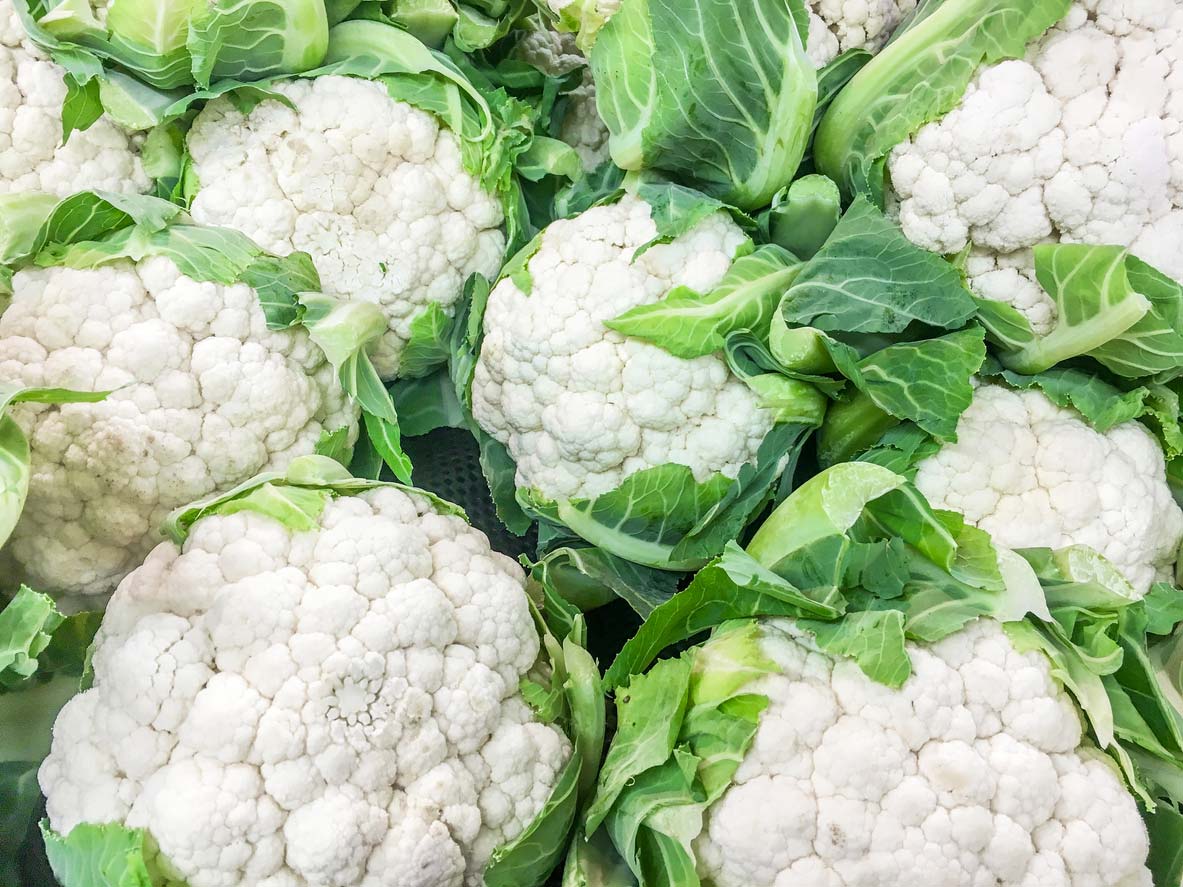
Cauliflower, a nutritional powerhouse despite its pale hue, is another one of those awesome veggies that doesn’t retain much by way of pesticides. The two most commonly found chemicals aren’t great for honeybees, which is a good reason to still choose organic if you can swing it. But by and large, non-organic cauliflower is a perfectly fine option.
10. Cantaloupes

Out of the 17 pesticides found in cantaloupes, the five most common are considered benign for human use (although three of them are moderately to highly toxic to honeybees). Cantaloupes are typically less heavily sprayed than many other crops; the average coverage receives less than 2/5 of a pound of pesticides per acre.
11. Broccoli

When you choose non-organic broccoli, you’re probably not putting your family at risk. With the exception of DCPA, found in 36% of samples, and chlorpyrifos, appearing 8% of the time, the seven pesticides that comprise the lion’s share in terms of detectable residue are considered reasonably safe for humans. Again, it’s a different story for honeybees and the environment, so if you can manage organic, it’s almost always the best option.
If you can’t find organic broccoli, or justify the price difference, you’re probably fine choosing any broccoli you can find from just about anywhere in the world. Fresh or frozen, organic or non-organic — you and your family won’t be consuming a lot of harmful stuff.
12. Mushrooms

By far, the most common pesticide used on mushrooms, thiabendazole, is also a pharmaceutical routinely prescribed for humans to treat pinworm and hookworm infections, among others. I’m not suggesting going on a mushroom binge if you get diagnosed with a worm infection — just letting you know that, as far as pesticides go, it’s not considered an especially harmful substance (unless you happen to be a pinworm!).
Mushrooms are kind of fun to grow, especially if you start with a kit that has everything you need. While organic is always best, you can pretty safely choose any fresh domestic mushroom, organic or not.
13. Cabbage

It’s good to know that despite non-organic kale’s dreadful rating as a source of pesticides, some members of the cruciferous clan can still put on a good show without an organic certification. Like cauliflower and broccoli, cabbage fits this bill. Of the seven most common pesticides found in cabbage by the USDA, only methomyl and flonicamid are associated with health issues. And they appear in 1.3% and 0.8% of samples, respectively.
Both domestic and imported cabbage are deemed acceptable.
14. Honeydew melon

Honeydew producers, at least in California, have largely committed to reduced and strategic pesticide use in a system known as IPM (integrated pest management). This method sometimes includes pesticides, but only quite judiciously, and features many farming practices that reduce pest pressure, such as planting in raised beds to improve drainage and minimize root diseases, killing weeds with flame rather than chemicals, and replacing sprinklers with drip irrigation.
15. Kiwi

Despite being the nickname for folks from New Zealand, this fruit is grown in the US as well. If your main concern is your own health, domestic kiwis are relatively safe. The problem is, non-organic kiwis receive pesticide treatments that can bring harm to the farmworkers whose hands bring us our food. For them, in addition to acute illness immediately following exposure, the pesticides are also linked to high levels of chronic disease. They can also poison groundwater and injure non-human animal species.
So your best bet, all around, is to choose organic kiwis if you can. But you won’t encounter significant pesticide exposure if you eat a conventionally grown kiwi.
Pesticide-Free Clean 15 Recipes
The Clean 15 make it easy to create a variety of cost-effective, delicious, and nutritious meals throughout the week. We’ve listed a few to get you started: the best-ever Cream of Broccoli Soup, fragrant and flavorful Roasted Cauliflower with Turmeric and Cumin, and crunchy goodness with the Collard Wraps. Here’s to staying well through clean-eating!
1. Cream of Broccoli Soup
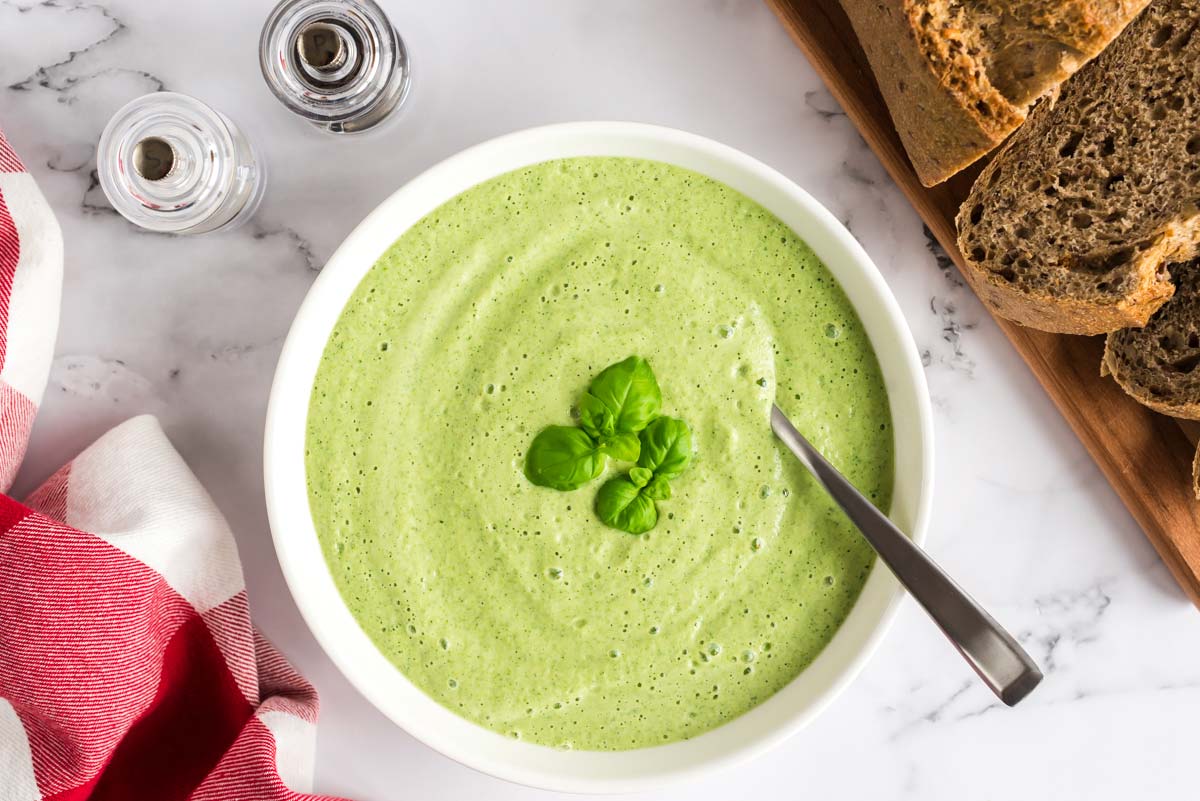
Broccoli never tasted so good! Make plenty of this creamy and healing soup and freeze some in individual containers for ready-to-go meals. Packed with sulforaphane, vitamin C, and fiber, this member of the Clean 15 will help keep you energized and healthy all winter long.
2. Roasted Cauliflower with Turmeric and Cumin

One of this clean-15 veggie’s claims to fame is its versatility! Use it in soups, veggie burgers, salads, grain bowls, or simply enjoy it roasted by itself. Cauliflower doesn’t need much for it to be delicious. A little turmeric and cumin accompany this cruciferous veggie in a dish packed with flavor and nutrition.
3. Collard Wraps

What’s neat about this meal is that you can easily build a custom, cost-effective, and clean meal using the Clean 15. Starting with your collard greens, add purple cabbage, avocado, sweet peas, and roasted veggies like mushrooms, broccoli, and asparagus. Include your favorite hummus or bean spread. Switch out the veggies with other Clean 15 foods to create a variety of Collard Wrap meals throughout the week!
Shop & Eat Smarter

I hope this article will be a useful reference whenever you shop for fresh produce. That said, I want to make one thing very clear: Even though some of the chemicals we’ve discussed are pretty alarming, please don’t make the perfect the enemy of the good. No matter what kind of produce you end up with, eating more fruits and vegetables is almost always a good thing!
And you do have means to mitigate your pesticide exposure on many fruits and vegetables by washing them thoroughly. So especially if it’s not grown organically, or in your own backyard, you may want to wash your produce. Here’s our article on how to wash produce to get rid of pesticide residues.










































